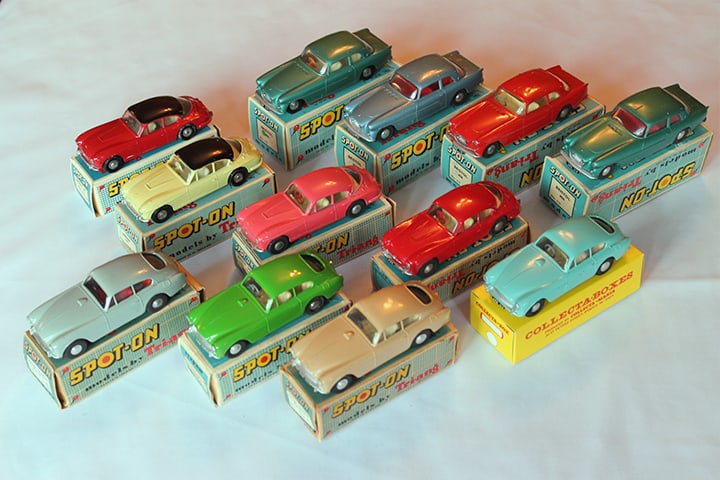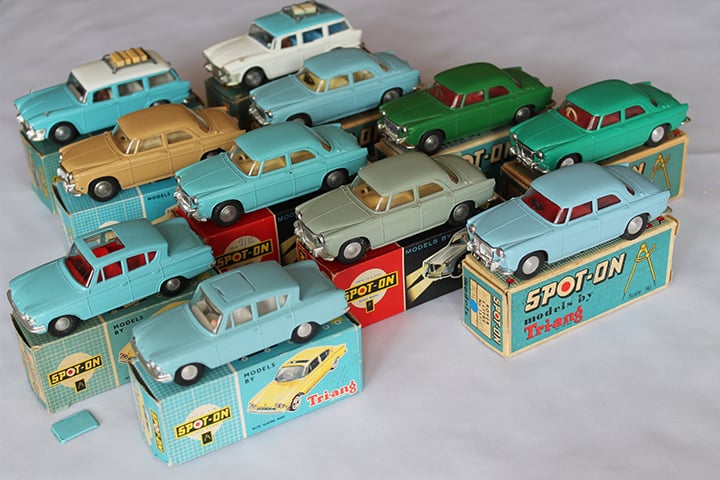
Origins of Spot-On Toys
In this article I provide a brief history of how Spot-On Toys came onto the diecast model scene. However, a far more in depth article can be read from ‘The Ultimate Book of Spot-On Toys’ by Brian Salter which covers in depth the history of Triang and Lines Bros. The Spot-On trade mark was registered to Triang based in Merton Surrey, this was in December 1958 and in the following year ‘Spot On Models Lt’d was incorporated on the 12th February 1958.
Lines Bros had a factory already well established in Belfast Northern Ireland making other toys but by May 1959 only 3 months after Spot On Toys was incorporated the first diecast models were produced for what was known as their ‘Vehicle & Highway System range. Unique to Spot-On was that each model whatever their casting size was produced to a 1/42 scale meaning a Double Decker bus was considerably larger than a saloon car and more realistic in size comparison, this had not been a design goal by Dinky or Corgi.
Spot-On Innovations. Interiors from the outset
Each of the brands led at different times with innovations but Spot On were the first to introduce interiors which were introduced in May 1959 from outset. Corgi followed in July 1959 and Dinky not until April 1960. They were also the first main diecast producer to introduce electric lights in August 1961 when Corgi waited a further year to October 1962 and Dinky not until January 1964.
About one year after the launch of the diecast range the ‘Dollies Home’ range was introduced seeking to meet the great demand by girls which included miniature furniture.

The end was imminent
In 1964 Lines Bros took over Mecanno which included the very successful Dinky range and this probably caused the premature death warrant to the newly established Spot On model range. 1967 saw the last production of Spot On models made in the UK. A final range of models were made in New Zealand but only 16 of the planned 22 models appear to have made the production line.
By 1970 the name and brand Spot On was history.
An iconic brand with the most avid collectors
The toys themselves were heavier than Dinky or Corgi and particularly their chromed plastic bumper parts were brittle and could be easily damaged. Many models had number plates applied and these also became vulnerable as the years went by.
However, this brand has become iconic and there are many collectors nowadays who solely collect Spot On models and nothing else. For the right models’ big premiums are paid due to their rarity or demand such as 211 Austin Mini the 195 Rally Volkswagen, Petrol Tankers, Mulliner coach and Tractor.
Regularly a new colour is discovered and the colour range is far more extensive than that produced by the larger competitors.
Due to the limited numbers produced, Spot On I believe will continue to be sought after by collectors and therefore despite only a short production term its legacy will last so much longer.
Literature
The most extensive information can be found from ‘The Ultimate Book of Spot-On models Ltd’ a large manual book